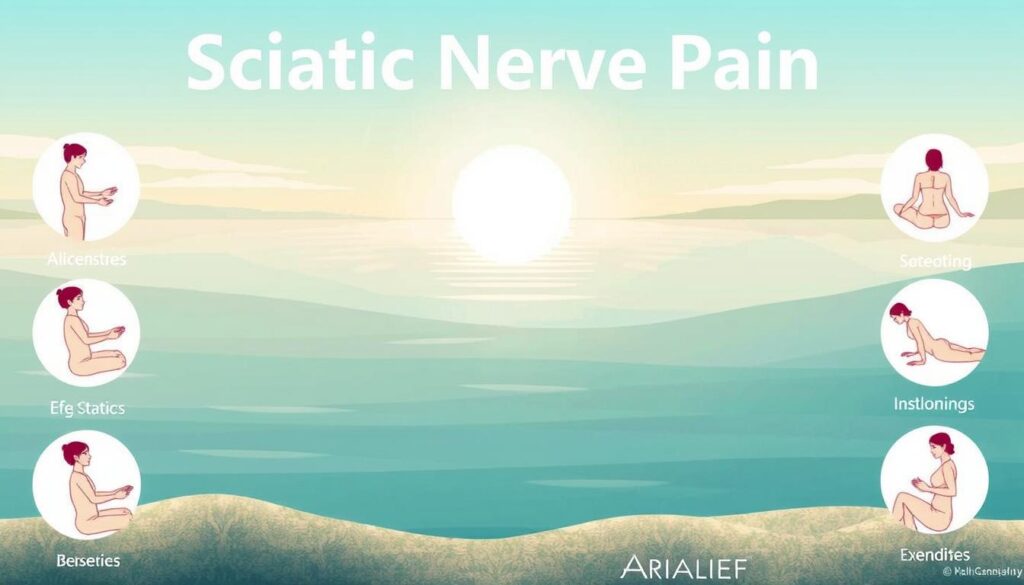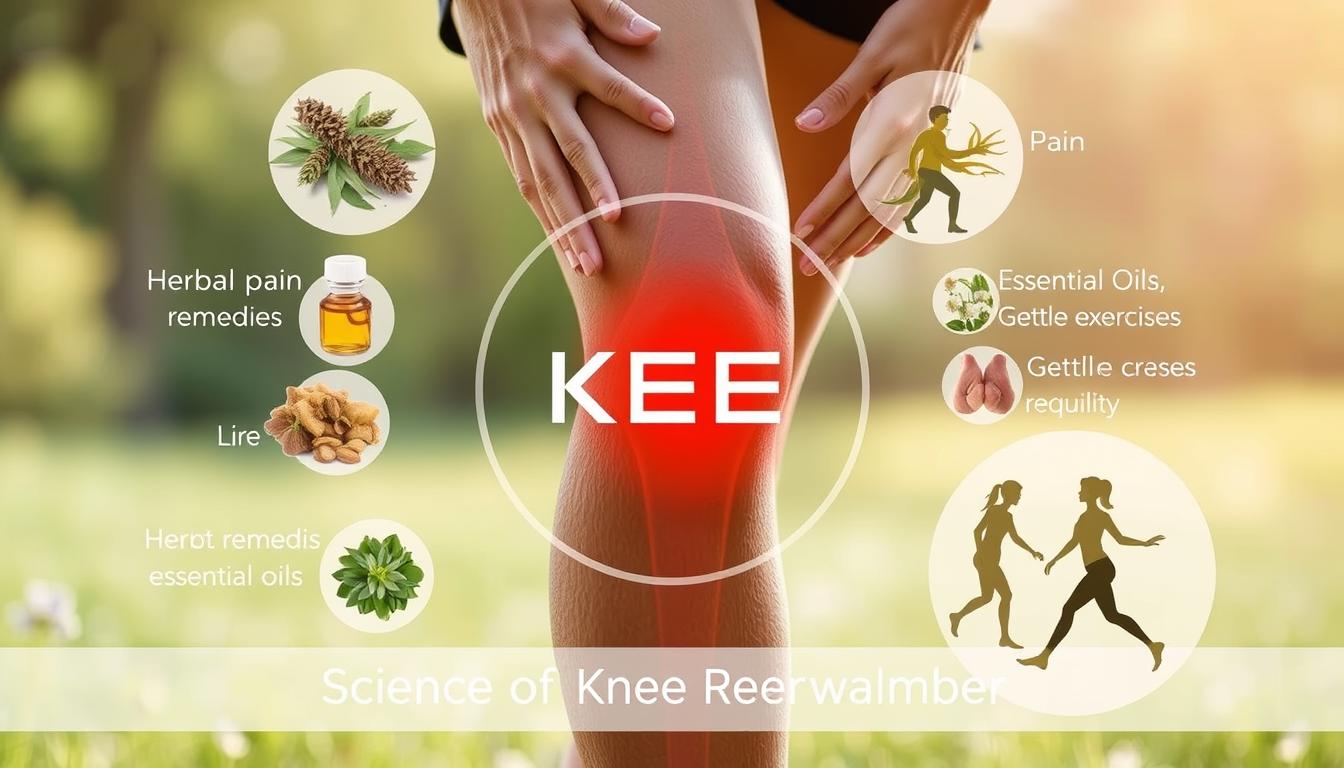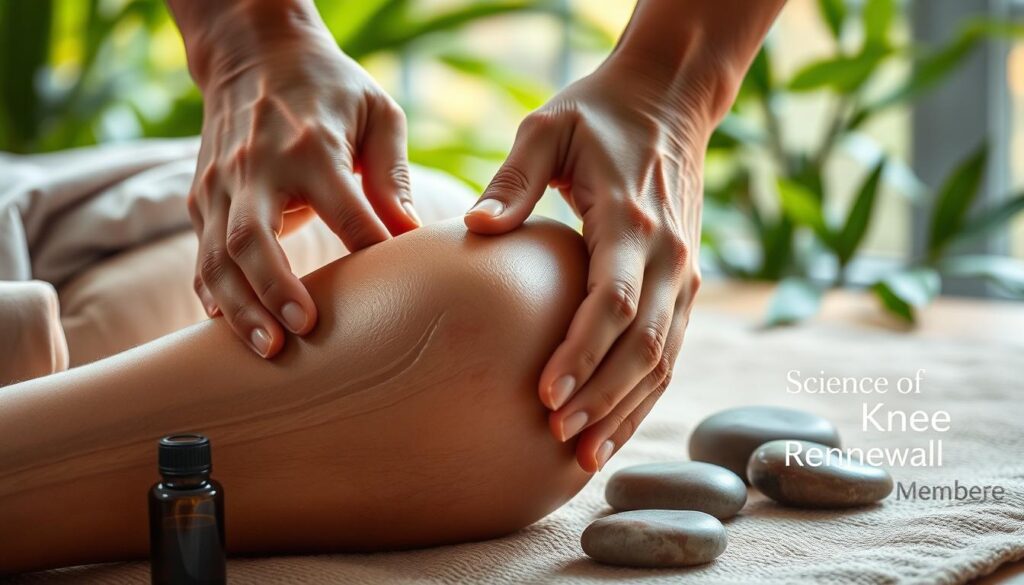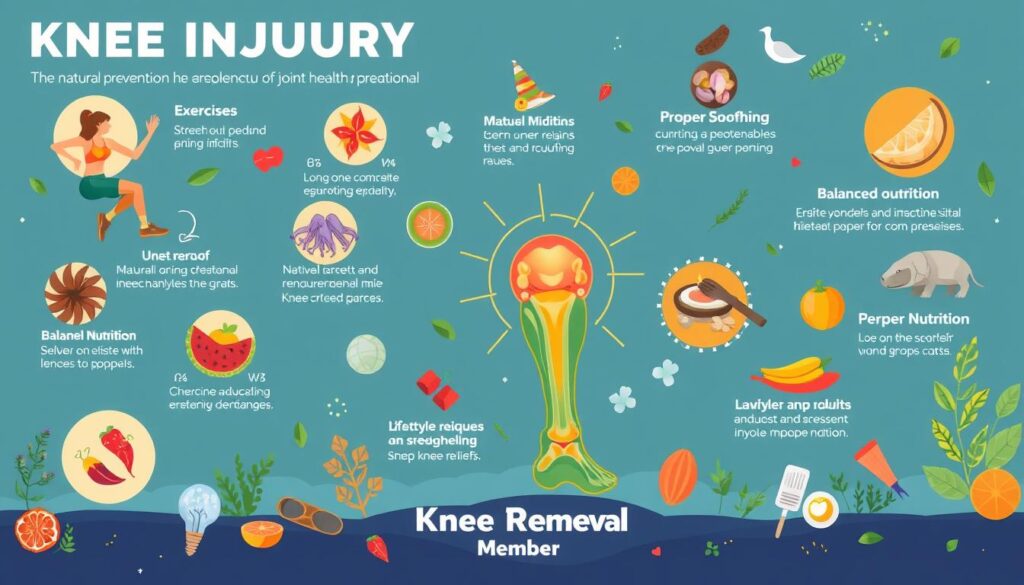Sciatic nerve pain relief is essential for anyone struggling with the discomfort of sciatica. Finding effective sciatic nerve relief and proper sciatic pain management can make a huge difference. One promising option is Arialief sciatic nerve treatment, a natural solution designed to target nerve pain. Whether you’re dealing with sciatica or piriformis syndrome, Arialief for nerve pain offers hope and support. In this article, we’ll explore the causes, symptoms, and treatments — with a special focus on how Arialief can help relieve sciatic nerve pain.
Key Takeaways
- Arialief provides natural relief for sciatic nerve pain
- Understand the common symptoms and impact of sciatic nerve pain on daily life
- Discover how Arialief’s unique formulation targets the root cause of sciatic pain
- Learn about the proper usage and dosage guidelines for Arialief
- Explore complementary treatments and lifestyle changes to enhance Arialief’s effectiveness
Understanding Sciatic Nerve Pain and Its Impact on Daily Life
Sciatic nerve pain can really hurt your quality of life. This guide will cover symptoms, warning signs, and how it affects daily activities.
Common Symptoms and Warning Signs
People with sciatic nerve pain often feel sharp pains, tingling, and muscle weakness. These feelings can happen in the lower back, hips, and legs. They can get worse with some movements or activities.
- Sharp, shooting pains radiating from the lower back down the leg
- Tingling, burning, or prickling sensations in the affected limb
- Muscle weakness or loss of sensation in the leg, foot, or toes
- Difficulty standing, walking, or performing everyday tasks
How Sciatic Pain Affects Your Quality of Life
Sciatic nerve pain can make simple tasks hard. It can affect how you move, sleep, and feel emotionally. This can really lower your quality of life.
| Impact on Daily Life | Percentage of Individuals Affected |
|---|---|
| Difficulty with mobility and physical activities | 85% |
| Disrupted sleep patterns | 70% |
| Emotional distress and decreased quality of life | 65% |
Risk Factors and Common Triggers
Some things can make sciatic nerve pain worse or increase your risk. Knowing these can help manage and prevent it.
- Herniated or bulging discs in the spine
- Spinal stenosis or narrowing of the spinal canal
- Piriformis syndrome, a condition where the piriformis muscle irritates the sciatic nerve
- Pregnancy and childbirth
- Prolonged sitting or poor posture
- Sudden movements or heavy lifting
By knowing the symptoms, how it affects daily life, and what can trigger it, you can take steps to manage sciatic nerve pain.
What is Arialief and How Does it Work?
Arialief is a new solution for sciatic nerve pain. It targets the root cause of sciatica. This natural formula helps manage this common pain.
- Arialief’s special mix of ingredients fights inflammation and nerve irritation. These are the main causes of sciatic pain. It offers fast and lasting relief.
At its core, Arialief has arialief for nerve pain, arialief for back pain, and arialief for leg pain. These ingredients block pain signals in the sciatic nerve. This reduces inflammation and soothes the nerve, easing sciatica symptoms.
Arialief is unique because it attacks the root of sciatic pain, not just the symptoms. It helps heal sciatica and restore a pain-free life. It’s a safe and effective way to manage arialief for nerve pain, arialief for back pain, or arialief for leg pain.

Adding Arialief to your daily routine can change how you manage sciatic pain. Its natural and clinically-backed formula makes it a trusted ally against sciatica. Try Arialief and improve your quality of life today.
| Key Benefits of Arialief | Features |
|---|---|
|
|
How Arialief helps with sciatic nerve pain,Sciatic nerve pain relief
If you’re dealing with sciatic nerve pain, Arialief is a proven solution. This topical cream uses natural ingredients for lasting relief. It tackles the severe symptoms of sciatica effectively.
Active Ingredients in Arialief
Arialief’s success comes from its special blend. It includes menthol, camphor, and other natural pain relievers. These ingredients work together to address sciatic nerve pain at its source.
Mechanism of Action
Arialief’s ingredients block pain signals to the brain. They also reduce inflammation and improve blood flow. This approach helps with both sudden and ongoing sciatic nerve pain, offering real relief.
Duration of Relief
Arialief stands out by providing long-lasting relief for up to 8 hours with one application. This lets users enjoy their day without sciatic nerve pain interruptions.
Real Arialief users share their success stories:
“Arialief has been a game-changer for my sciatic nerve pain. I’ve tried countless other treatments, but nothing has provided the level of relief and comfort that I get from Arialief. It’s truly a lifesaver.”
– Sarah, New York
Learn how Arialief can help you find the best treatment for sciatic nerve pain. Click here to discover more and start your journey to lasting relief.

Proper Usage and Dosage Guidelines for Arialief
Using Arialief for sciatic nerve pain and chronic sciatic nerve pain needs careful following. This ensures it works well and safely. Knowing how to use and dose Arialief helps you get the most out of it. This way, you can find lasting relief from your pain.
Recommended Dosage
The right amount of Arialief for sciatic nerve pain is one to two capsules, taken three times a day. Make sure to take them with food. This helps your body absorb them better and avoids stomach upset.
Duration of Use
Most people use Arialief for two to three weeks. This is until their sciatic nerve pain gets much better or goes away. But, if you have chronic sciatic nerve pain, you might need to use it longer. Always talk to a doctor about this.
Precautions and Considerations
- Always talk to your doctor before starting Arialief. This is especially true if you have health issues or take other medicines.
- Don’t take more than the recommended amount. Taking too much can lead to side effects.
- If you have bad reactions or your pain gets worse, stop using Arialief and see a doctor.
- Women who are pregnant or breastfeeding should not use Arialief without a doctor’s okay.
By sticking to the right usage and dosage for Arialief, you can get the best results for your sciatic nerve pain and chronic sciatic nerve pain. Always check with your doctor if you have any doubts or questions about using Arialief for your pain.
To learn more about Arialief and how it can help with your sciatic nerve pain, please visit: arialief.com
Best Practices for Combining Arialief with Physical Therapy
To get the best relief from sciatic nerve pain, mix Arialief with a good physical therapy plan. This combo boosts the benefits and helps you recover fully.
Recommended Exercises
Adding certain exercises to your routine can help Arialief work better. These exercises aim at the main causes of sciatic nerve pain. Some top ones include:
- Pigeon pose: This stretch relaxes the piriformis muscle, which can bother the sciatic nerve.
- Bridges: These strengthen the glutes and hamstrings, easing pressure on the sciatic nerve.
- Knee-to-chest stretches: They stretch the lower back and hip muscles gently.
Stretching Routines
Stretching regularly is also key in managing sciatic nerve pain. Some great stretches for sciatica are:
- Seated forward fold: This stretch stretches the hamstrings and lower back.
- Cobra pose: It helps ease tension in the lower back.
- Figure-four stretch: This targets the piriformis muscle, often causing sciatic nerve pain.
Activity Modifications
It’s also crucial to adjust your daily activities to avoid making sciatic nerve pain worse. Some good self-care tips include:
- Keeping good posture, especially when sitting for a long time.
- Choosing low-impact activities instead of high-impact ones.
- Taking regular breaks to let your body rest.
Using Arialief with a solid physical therapy plan can greatly improve your life. For more details, check out Arialief’s website.
Natural Complementary Treatments with Arialief
Arialief is a strong tool for managing sciatic nerve pain. It works best when paired with natural treatments. These methods can offer extra relief and boost your overall health. Let’s look at some natural remedies that can help with sciatic nerve pain, alternative sciatica treatments, and sciatica relief without surgery.
Heat and Cold Therapy
Heat and cold can help reduce inflammation and ease pain. Try using a heating pad, hot compress, or ice pack for 15-20 minutes several times a day. This can help you find the relief you need.
Massage Therapy
Gentle massage can relax muscles and ease tension around the sciatic nerve. Work with a licensed massage therapist who knows how to treat sciatica for the best results.
Acupuncture
Acupuncture, a traditional Chinese medicine, can manage natural remedies for sciatic nerve pain. Thin needles are inserted at specific points to help energy flow and reduce pain.
“Acupuncture has been a game-changer for my sciatic nerve pain. I noticed a significant reduction in my symptoms after just a few sessions.”
– Sarah, Arialief user
Always talk to your healthcare provider before trying new natural treatments. By using Arialief with these methods, you can get full sciatica relief without surgery. This can greatly improve your life quality.
Lifestyle Changes to Enhance Arialief’s Effectiveness
To get the most out of Arialief, making lifestyle changes is key. Adjusting your ergonomics, diet, and sleep can boost its pain-relieving effects. This can help you find lasting relief from sciatic nerve pain.
Ergonomic Adjustments
Good ergonomics are vital for managing sciatic nerve pain. Make sure your workspace supports good posture and doesn’t strain your back and hips. Use a standing desk, adjustable chair, and keyboard tray to keep your body aligned.
Also, take breaks to stretch and move around. This helps counteract the harm of sitting for too long.
Dietary Considerations
Your diet affects sciatic nerve pain. Eat foods that fight inflammation, like fatty fish, nuts, and leafy greens. Stay away from processed foods, refined carbs, and sugars, as they can make pain worse.
Drinking enough water is also key to reducing sciatic nerve pain.
Sleep Position Optimization
Quality sleep is essential for managing sciatic nerve pain. The right sleep position can help a lot. Try sleeping on your side with a pillow between your knees or under your thigh.
Avoid sleeping on your stomach, as it can strain your lower back. Pregnant individuals may find relief by sleeping on their left side with a body pillow.
By making these lifestyle changes and using Arialief, you can manage sciatic nerve pain better. For more details on how Arialief can help, visit Arialief.com.
Safety Considerations and Potential Side Effects
Managing sciatic nerve pain safely is key. Arialief is a drug-free option for arialief nerve pain treatment. It’s made with natural ingredients, reducing the chance of side effects. This makes it a safer choice for drug-free sciatic pain management.
Arialief’s ingredients are chosen carefully and tested thoroughly. They are free from synthetic chemicals and harmful additives. This natural formula helps with pain relief and supports your health.
Before using Arialief, talk to your doctor, especially if you have health issues or take other medicines. Some people might feel mild skin irritation or digestive issues. But these are rare and usually go away quickly.
- Arialief is non-addictive and doesn’t have habit-forming substances.
- The formula is free from common allergens like gluten, soy, and dairy. It’s good for people with dietary restrictions.
- Arialief is not for pregnant or breastfeeding women. The safety in these groups is not fully known.
If you have ongoing or serious side effects from Arialief, stop using it and talk to your doctor right away. They can help figure out the best plan for you.
| Potential Side Effects | Frequency | Recommended Action |
|---|---|---|
| Mild skin irritation | Rare | Discontinue use and consult healthcare provider |
| Digestive discomfort | Infrequent | Discontinue use and consult healthcare provider |
| Allergic reaction | Rare | Discontinue use immediately and seek medical attention |
Arialief focuses on safety and gives you clear information. It lets you make smart choices about your arialief nerve pain treatment and drug-free sciatic pain management. With its natural ingredients, Arialief is a safe and effective way to manage your pain and improve your life.
Conclusion
Arialief is a natural way to manage sciatic nerve pain. It targets the main causes of this condition. This means you can get lasting relief and improve your life quality.
Arialief uses special ingredients that work well. It helps with sciatica symptoms like sharp pains, numbness, and tingling. It’s a good choice if you want to avoid regular pain meds or add to your physical therapy.
To experience better movement and less pain with Arialief, start today by visiting the official website.
We care about your comfort and getting better. Try Arialief for lasting relief from sciatic nerve pain. Start your journey to feeling better today.
Explore Trusted Resources on Sciatic Nerve Pain Relief
If you’re looking for expert advice and more in-depth information on managing sciatic nerve pain, these trusted sources can be highly valuable:
Mayo Clinic
– Mayo Clinic offers comprehensive insights into sciatica, including symptoms, causes, and recommended treatments. Visit Mayo Clinic Sciatica Guide.
WebMD – A widely respected resource, WebMD provides information on sciatic nerve pain, home care options, and when to seek medical help. Check out their detailed guide at WebMD Sciatica Overview.
Healthline – Healthline is a trusted source for practical advice on exercises, stretches, and natural remedies to relieve sciatic nerve pain. Read more at Healthline Sciatica Relief.
These sites can offer credible, evidence-based guidance that complements the strategies discussed here.
FAQ
What is sciatic nerve pain and what are its symptoms?
Sciatic nerve pain, or sciatica, is a condition that causes pain and numbness. It affects the sciatic nerve, which runs from the lower back to the legs. Symptoms include lower back pain, leg pain, numbness, and weakness in the leg.
How does Arialief help with sciatic nerve pain relief?
Arialief is a new solution for sciatic nerve pain. It has natural ingredients that reduce inflammation and calm nerves. This provides relief from sciatica symptoms.
What are the active ingredients in Arialief and how do they work?
Arialief contains vitamin B6, turmeric, and alpha-lipoic acid. These ingredients work together to reduce inflammation and improve nerve function. They help heal the sciatic nerve pain.
How long does Arialief take to provide relief from sciatic nerve pain?
Many people feel relief from sciatic nerve pain within a few days of using Arialief. But, relief time can vary. Using Arialief consistently for weeks is often needed for lasting relief.
Can Arialief be used in combination with other treatments for sciatic nerve pain?
Yes, Arialief can be used with other treatments like physical therapy and stretching. Using it with other therapies is often recommended for better results.
Are there any potential side effects or safety concerns with using Arialief?
Arialief is made from natural, safe ingredients. It’s usually well-tolerated. But, it’s important to follow the usage guidelines and talk to a healthcare professional, especially if you have health conditions or take medication.
How should Arialief be used for the best results?
For the best results, use Arialief as directed. Follow the recommended dosage and application. It’s best to use it with physical therapy, stretching, and lifestyle changes.






